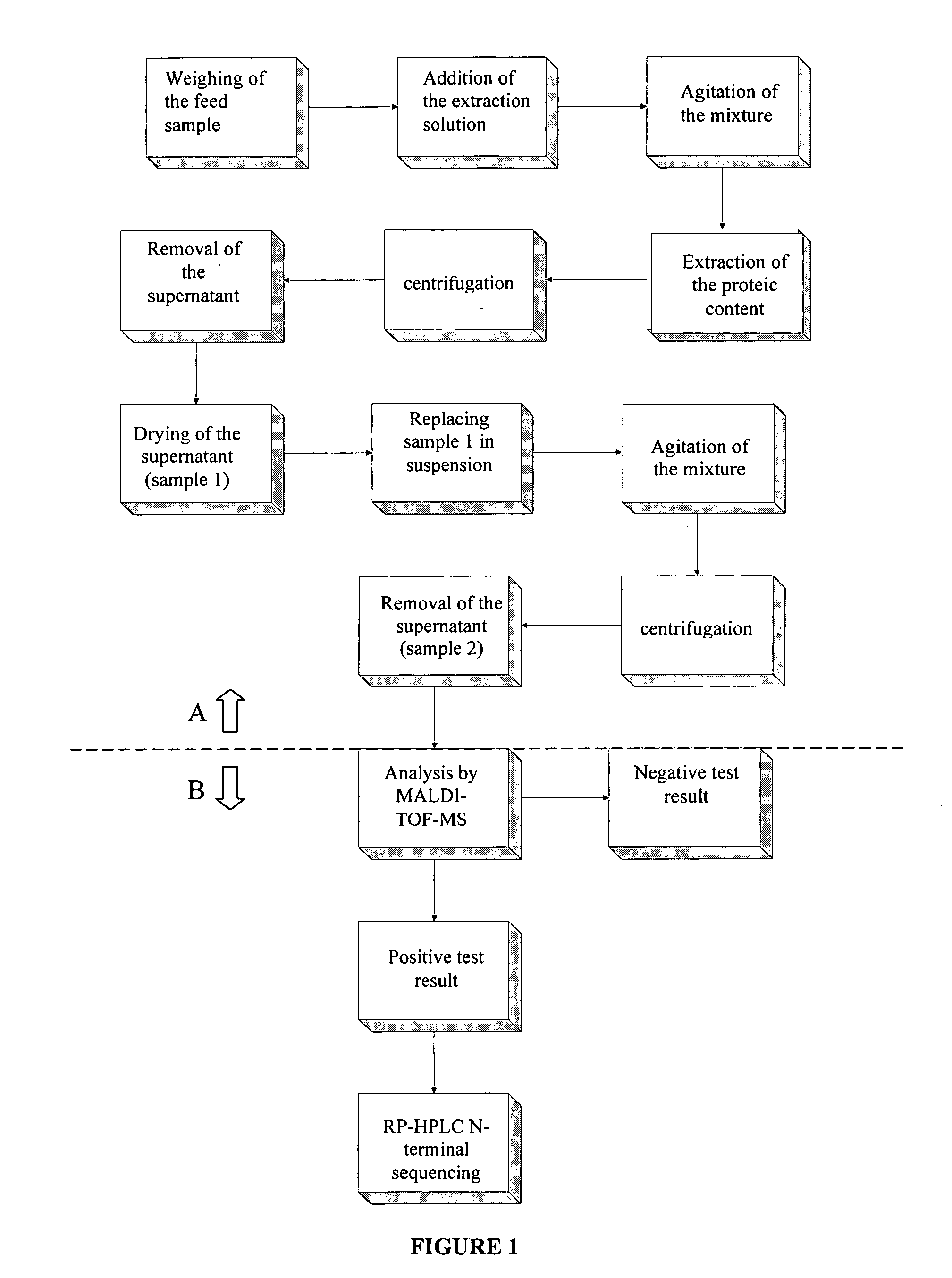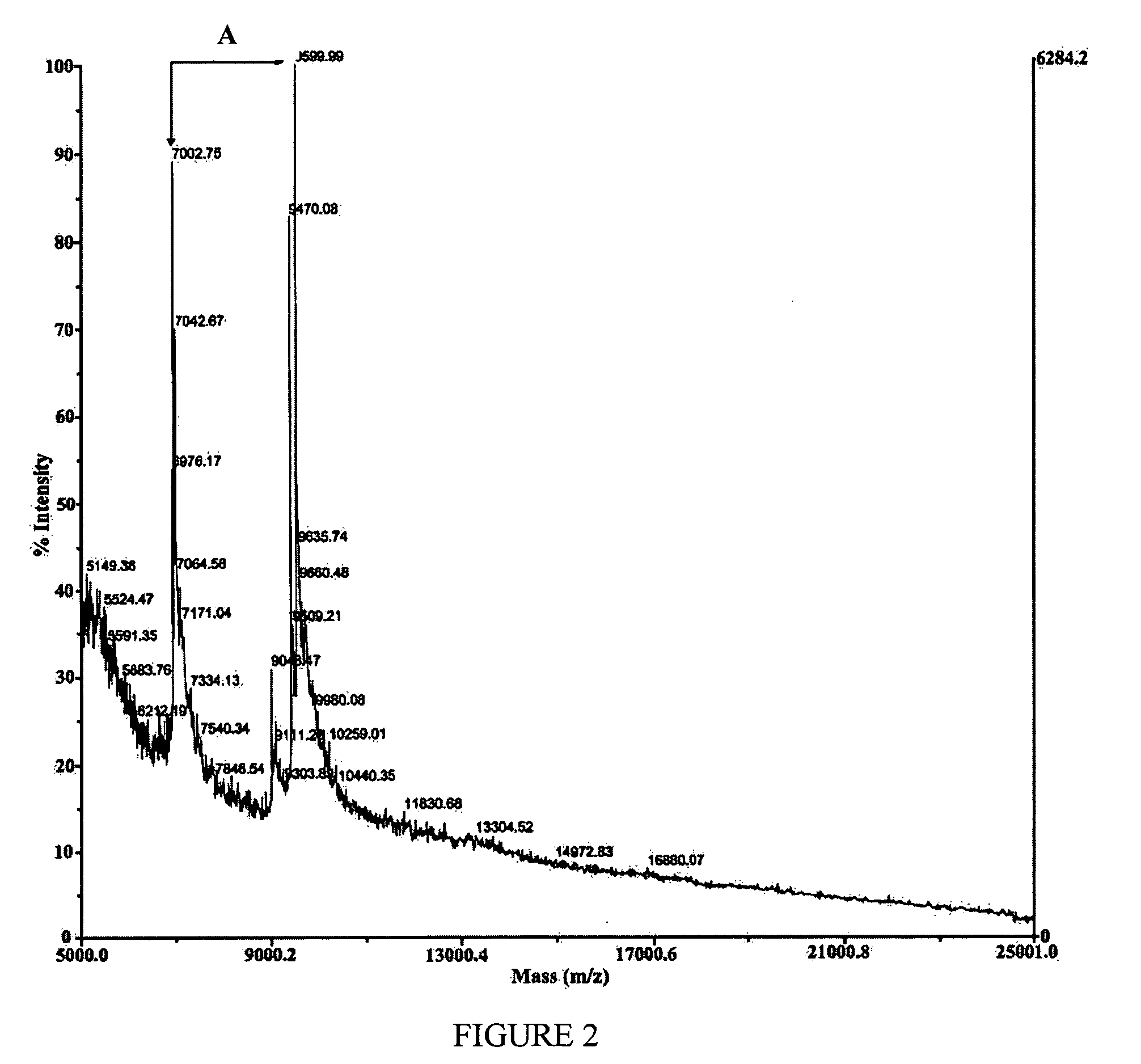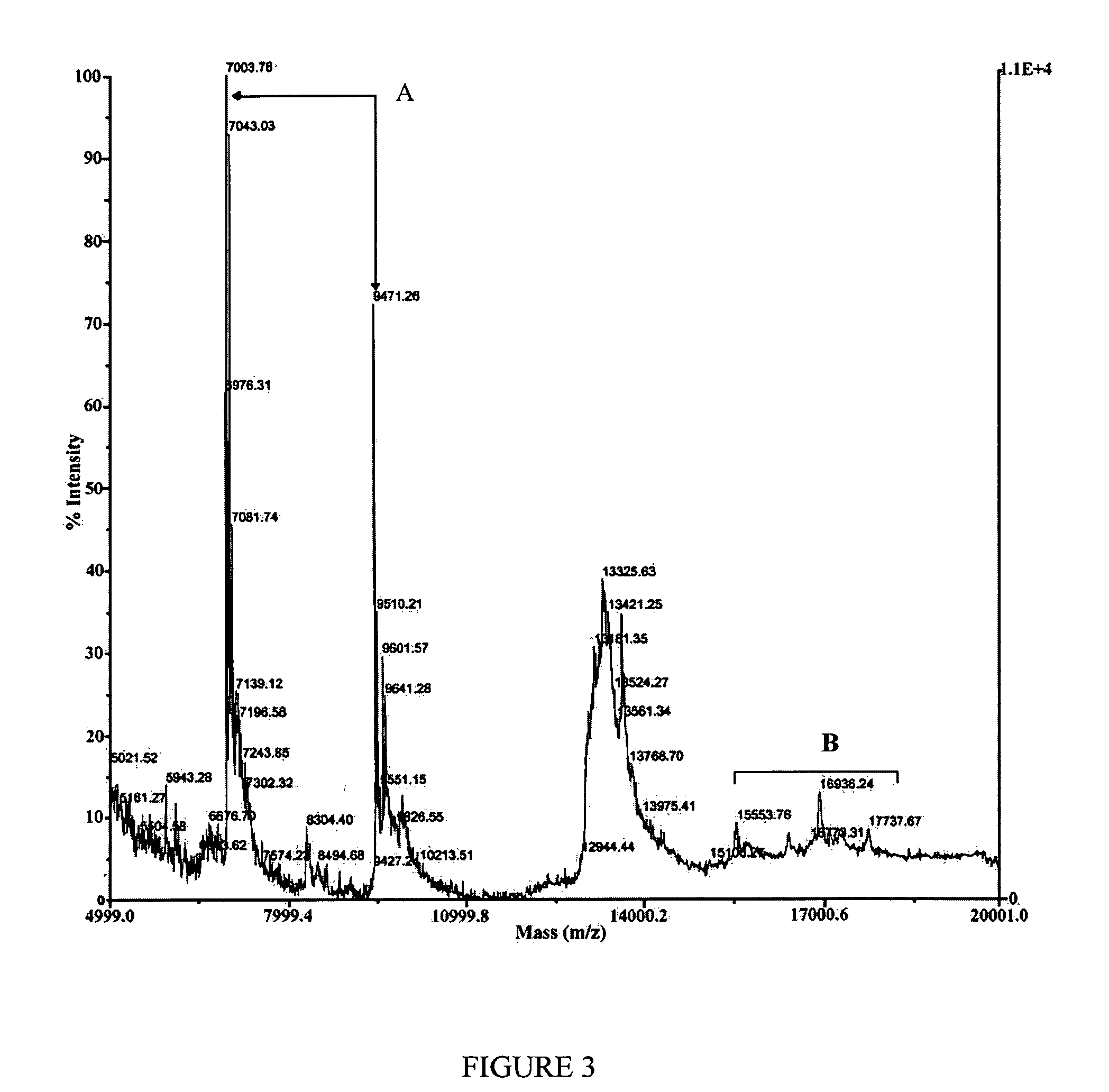Method for the detection of proteins of animal origin in complex mixtures
a protein and complex mixture technology, applied in the field of protein detection of animal origin in feed, can solve the problems of bse infectious agent nature, sharp decline of the number of new cases of bse, and inability to be discarded, and achieve the effect of avoiding the transmission of tses, low impurity levels, and adequate matrix-analyte molar ra
- Summary
- Abstract
- Description
- Claims
- Application Information
AI Technical Summary
Benefits of technology
Problems solved by technology
Method used
Image
Examples
example 1
Preparation of a Sample from Feed
[0055] A 2 ml Eppendorf tube is used to weigh 0.3 g of feed to which is added 2.0 ml of a 1:1 mixture of an aqueous solution of trifluoroacetic acid (TFA) 0.1% and a solution of TFA 0.1% in acetonitrile. The resulting mixture is agitated for 30 seconds and kept standing at 4° C. for 24 hours to allow the extraction of the proteic material. Following this, the mixture is centrifuged at 13.200 rpm and 22° C. for 5 minutes. The liquid phase [supernantant] is then removed and dried in vacuum by lyophilisation (sample 1). The solid phase (precipitate) is discarded. After replacing sample 1 in a suspension of 1.0 ml of an aqueous solution of TFA 0.1%, the mixture is agitated for 60 seconds and centrifuged again at 13.200 rpm and 22° C. for 5 minutes. The [supernantant] (sample 2) is removed and stored for later analysis of proteic composition. The precipitate is discarded. FIG. 1, Part A, schematically shows the extraction stage of the proteic content of ...
example 2
Analysis of the Proteic Content by the MALDI-TOF-MS Technique.
[0057] The 185 samples of the commercial feed listed in table 1 were analysed by mass spectrometry employing the MALDI-TOF technique for the detection of proteins of animal origin, specifically myoglobin and haemoglobin.
[0058] A Voyager DE-STR (Applied Biosystems, Framingham, Mass.) mass spectrometer was used. The following experimental parameters were employed for performing the analyses: [0059] Matrix: ferrulic acid 25 mg / ml; [0060] Mode: linear; [0061] Acceleration voltage: 25 kV; [0062] Laser N2: 2470-2770 μJ cm−2; [0063] Pressure at the ion source: 5.5×10−10 MPa (8×10−8 torr); [0064] Pressure at the detector: 6.2×10−11 MPa (9×10−9 torr).
[0065]FIG. 1, Part B, schematically shows the stages of analysing the proteic content of the feed in accordance with the present invention.
[0066] FIGS. 2 to 4 show examples of these spectrum, which were taken from two distinct feeds: A5 and G2. In the case of sample A5, the absenc...
PUM
| Property | Measurement | Unit |
|---|---|---|
| concentration | aaaaa | aaaaa |
| length | aaaaa | aaaaa |
| concentration | aaaaa | aaaaa |
Abstract
Description
Claims
Application Information
 Login to View More
Login to View More - R&D
- Intellectual Property
- Life Sciences
- Materials
- Tech Scout
- Unparalleled Data Quality
- Higher Quality Content
- 60% Fewer Hallucinations
Browse by: Latest US Patents, China's latest patents, Technical Efficacy Thesaurus, Application Domain, Technology Topic, Popular Technical Reports.
© 2025 PatSnap. All rights reserved.Legal|Privacy policy|Modern Slavery Act Transparency Statement|Sitemap|About US| Contact US: help@patsnap.com



